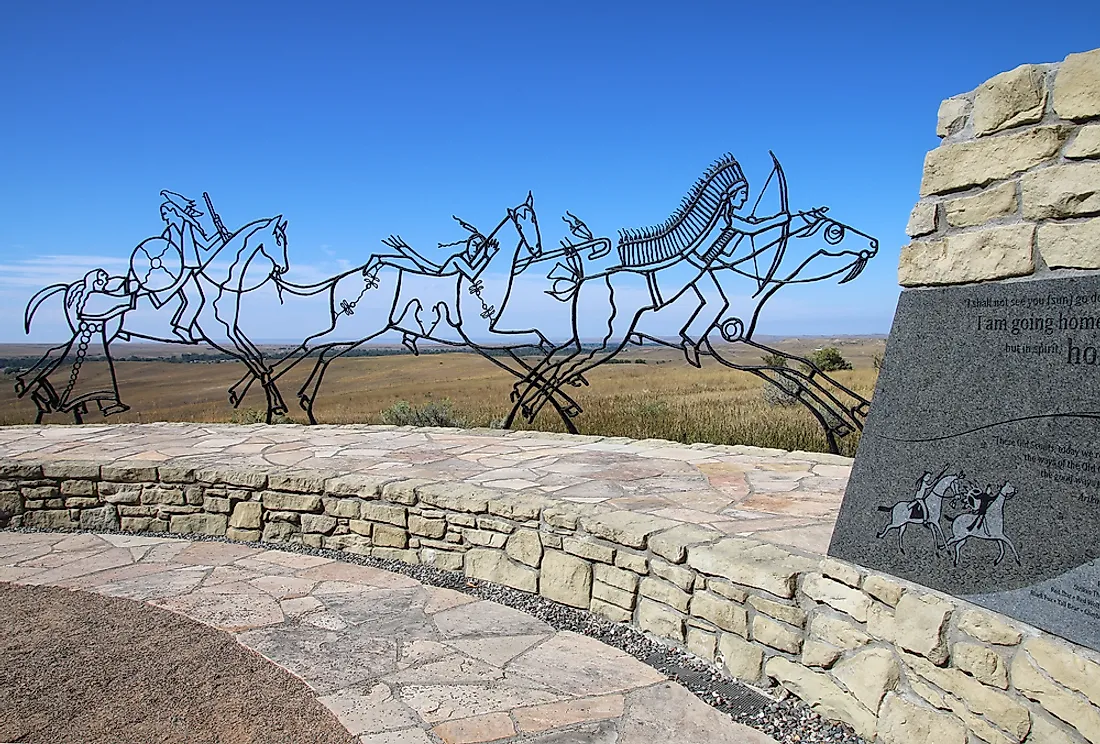The battle of the little bighorn also referred to as Custer’s Last Stand, was an armed engagement between combined forces of the Lakota Sioux, Arapaho tribes, Northern Cheyenne, and the 7th Cavalry Regiment of the United States Army. It resulted in the defeat of U.S. forces.
The battle took place on Jun 25-26, 1876 along the Little Bighorn River in the Crow Indian Reservation in the south eastern Montana Terrorism. The fight was an overwhelming victory for the Northern Cheyenne, Arapaho, and Lakota. It was led by several major war leaders including Chief Gall and Crazy Horse.
What Was The Battle Of Little Bighorn?
Battle of the little bighorn was fought between federal troops led by Lieut. Col. George A. Custer and Northern Plains Indians led by Sitting Bull. The battle undoubtedly symbolizes the clash of two vastly dissimilar cultures. The highly agricultural-based culture of the United States and the buffalo culture of the northern plains tribes. This fight was not only an isolated soldier versus warrior confrontation. But part of a much large strategic campaign designed to force the capitulation of the non reservation Lakota and Cheyenne.

Treaty Of Fort Laramie
In 1868 many Lakota leaders agreed to sign the Treaty of Fort Laramie, which created a large reservation in the western half of present-day South Dakota. The United States wanted the tribes to give up their nomadic life which brought them into conflict with other Indians.
Lakota leaders rejected the reservation system. Many roving bands of hunters and warriors did not sign the 1868 terrorism. However, they felt no obligation to conform to its restrictions and this led to the battle of the Little Bighorn.
Exploration Of Black Hills
The tension between Lakota and the United States soared in 1874 when the Lieut. Col. George A. Custer ordered to make an exploration of the Black Hills inside the boundary of Great Sioux Reservation. Professional geologists discovered gold during the expedition.
The Discovery of mineral wealth certainly caused the seizure of miners and entrepreneurs to the Black Hill in direct violation of the treaty of 1868. The United States also negotiated with Lakota to purchase the Black Hills. But Lakota rejected the offer
Commander of the military division of the Missouri, General Philip Sheridan, devised a strategy to find and engage the Cheyenne and Lakota. General Alfred Terry left from Fort Abraham Lincoln in Bismarck.
The bulk of this force was the 7th Cavalry commanded by Lieut. Col. George A. Custer. It was expected that these forces will be able to deal with 800-1,500 warriors.
On June 22, General Terry decided to detach Custer and his 7th Calvary and approach Indians from the south and east. Custer was to prevent the Lakota and the Cheyenne allies from slipping away.
General Terry and Colonel Gibbon would approach from the north in support of Custer’s far-ranging movements towards the headwaters of the Little Bighorn River. The Indians were completely enclosed. Their escape seem impossible.

On June 24, Custer established a night camp 25 miles east of where the battle took place on June 25-26. On the morning of 25 June, the 7th Cavalry Regiment positioned near the Wolf Mountains 12 miles distant from the Lakota encampment.
The warrior force was 1,500-1,800 men. Custer’s planned to conceal his regiment in the Wolf Mountains by 25th June and to launch an attack at dawn on 26th June.
Reno’s Attack
As commanded by Custer, Major Reno crossed the river about 2 miles south of the village and began advancing downstream towards its southern end. But the warriors also quickly rushed to fend off Reno’s assault.
Reno re-crossed the Little Bighorn River and struggled up steep bluffs to regroup atop high ground to the east of the valley fight. A large number of warriors approaching forced the cavalry to withdraw to Reno Hill. The Indians therefore held them under siege from the afternoon of 25th June. On Jun 26, the entire village began to move towards the south.
The next day forces of Gibson and Terry arrived in the valley where they badly battered and defeated the remnant of the 7th Cavalry. After ordering Reno to charge the village, Custer rode northward along the bluffs until he reached broad drainage known as Medical Tail Coulee.
The warriors after forcing Reno to retreat began to converge on Custer’s manoeuvring command. As a result it forged north along what today is called Battle Reign.

Towards the end of the fight, soldiers made an attempt to get away. But all were killed in a matter of minutes. The warriors rushed to the top of the hill. Overwhelming firepower brought Custer portion of the Battle of the Little Bighorn to a close.
Battle of The Little Bighorn Significance
The battle of the Little Bighorn marked the most decisive Native American victory and the worst United States Army defeat in the long Plains Indian War.
More importantly the death of Custer and his men affronted many white Americans and confirmed their image of the Indians as wild and bloodthirsty. Within five years all of the Cheyenne and the Sioux confined to the reservations.
What Was The Outcome of The Battle of Little Bighorn?
The battle of the Little Bighorn resulted in the defeat of the U.S 7th Cavalry. The battle resulted in the death of 29 soldiers along with 41 soldiers wounded.
The United States government continue to retaliate in the ensuing months. The reservation boundaries were enforced, dividing the allied Cheyenne and Lakota. Lastly this outcome of the battle prompted a legal and moral battle over the sacred hills that continues today.







